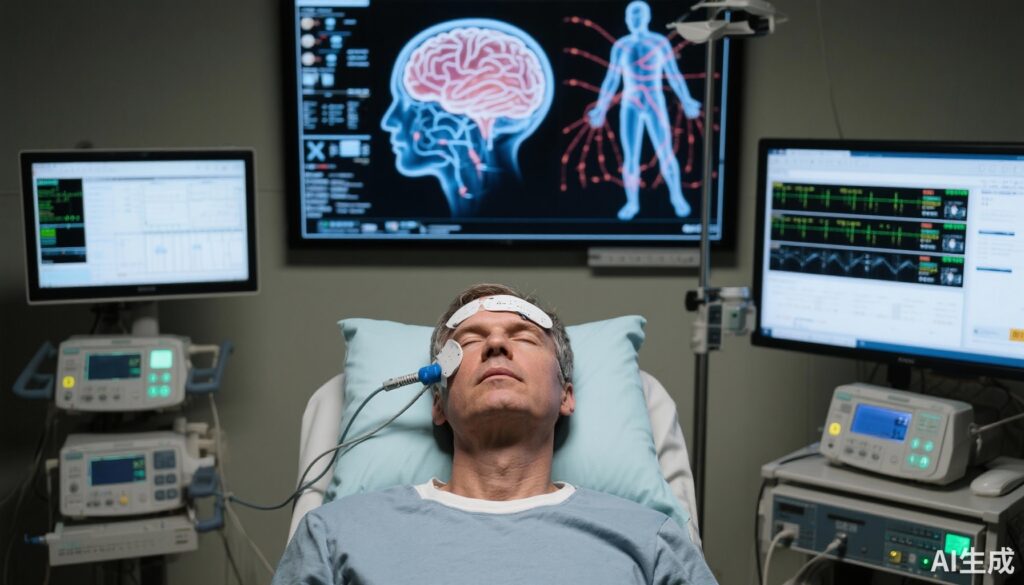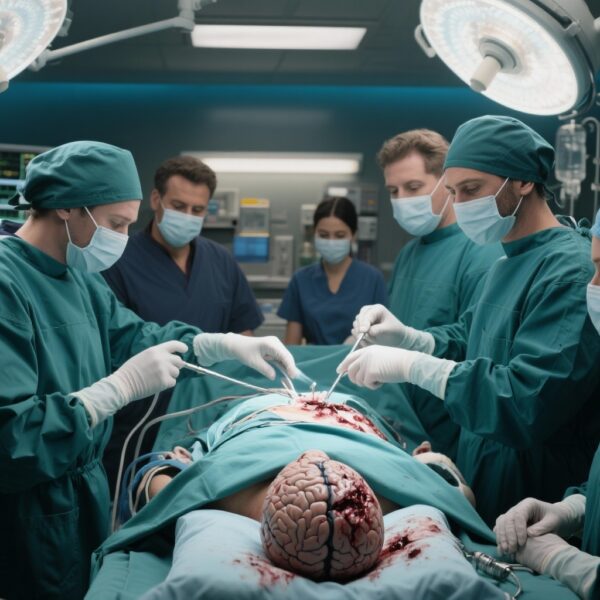Highlight
- EMAGINE trial investigated a novel low-intensity electromagnetic network-targeted field (ENTF) therapy combined with home-based rehabilitation to reduce disability after moderate to severe ischemic stroke.
- ENFT therapy was safe but did not achieve statistically significant improvement in the primary endpoint of global disability as measured by the modified Rankin Scale at 90 days.
- Secondary outcome trends favored the active treatment arm, suggesting potential efficacy that requires confirmation in a larger pivotal trial.
- The trial was stopped early due to a lack of reaching predefined success criteria despite good compliance and no device-related serious adverse events.
Study Background
Ischemic stroke remains a leading cause of long-term disability worldwide, imposing substantial individual, societal, and economic burdens. Despite advances in acute stroke care and secondary prevention, effective therapies aimed specifically at enhancing recovery in the subacute phase are limited. Upper-extremity motor impairment persists in many survivors, often leading to chronic functional limitations.
Emerging interventions such as neuromodulation have generated interest to augment neuroplasticity and functional recovery after stroke. Among these, noninvasive electromagnetic stimulation modalities targeting specific neural networks offer a promising therapeutic approach. Previous preliminary studies of electromagnetic network-targeted field (ENTF) stimulation demonstrated potential in enhancing motor recovery post-stroke, yet rigorous evaluation in a controlled clinical trial was necessary.
Study Design
The EMAGINE study was a multicenter, double-blind, sham-controlled, randomized clinical trial conducted at 15 acute care and rehabilitation centers across the United States from December 2021 to November 2023. It enrolled 100 participants aged approximately 59 years with moderate to moderately severe global disability (modified Rankin Scale (mRS) 3 or 4) and moderate upper-extremity impairment (Fugl-Meyer Assessment for Upper Extremity score 10–45), treated 4 to 21 days after ischemic stroke onset.
Participants were randomized equally to active or sham ENTF stimulation paired with an evidence-based, repetitive, home-based physical and occupational therapy regimen. The intervention comprised 45 one-hour sessions over approximately 9 weeks (up to day 90 post-stroke). The proprietary brain-computer interface-based device delivered low-intensity, frequency-tuned electromagnetic stimulation targeting brain networks involved in motor control.
The primary efficacy endpoint was change in global disability at day 90, assessed with the modified Rankin Scale (mRS; 0-6, where 0=no symptoms, 6=death). Secondary outcomes included upper-limb impairment, arm motor function, gait speed, hand function, functional limitations, and health-related quality of life.
Key Findings
The trial was stopped prematurely after the interim analysis of 78 evaluable patients showed the active treatment group did not achieve the prespecified promise zone threshold to justify continuation to full enrollment. Final analysis included 100 patients evenly divided between active and sham groups.
Demographics and baseline disability were balanced except that the active group had more right-hemisphere strokes (63.3% vs 44.9%), more severe upper-extremity impairment (Shoulder Abduction Finger Extension score <5 in 63.3% vs 49.0%), and fewer small-vessel infarcts. Median initiation of treatment post-stroke was 14 days.
Primary endpoint results showed a mean mRS score improvement from baseline to day 90 of -1.96 (SD 0.12) in the active group versus -1.72 (SD 0.12) in sham, a difference that did not reach statistical significance (P=.05). Notably, a higher proportion of patients in the active group achieved functional independence (mRS 0-1): 26% vs 10% for sham (odds ratio 2.99, 95% CI 0.96-9.30), suggestive of a potential clinical benefit.
Secondary outcome measures favored the active group across assessments of motor function, gait, hand dexterity, and quality of life, but without statistically significant differences in predefined analyses.
No serious adverse events attributed to the ENTF device occurred, and safety profiles were comparable between groups.
Expert Commentary
The EMAGINE trial represents an important step in rigorously evaluating electromagnetic neuromodulation combined with intensive rehabilitative therapy as a means to reduce post-stroke disability. Although the primary endpoint was not met with statistical significance, the observed trends and a nearly threefold increase in functional independence in the active group assist in hypothesis generation.
Limitations include early termination reducing statistical power, baseline imbalances in lesion characteristics and severity potentially biasing results, and the use of a relatively broad mRS scale vulnerable to inter-rater variability. The integration of a proprietary device and simultaneous rehabilitation complicates attribution of specific effects to electromagnetic stimulation alone.
Despite these caveats, the safety profile and suggestive efficacy justify an adequately powered pivotal trial to confirm clinical benefit. Understanding the precise neurobiological mechanisms by which ENTF stimulation may facilitate network-level plasticity is also warranted.
Conclusion
Noninvasive electromagnetic network-targeted field stimulation combined with home-based physical therapy is a safe intervention for patients recovering from moderate to severe ischemic stroke in the subacute phase. The EMAGINE trial did not demonstrate statistically significant superiority over sham stimulation in reducing global disability at 90 days. However, promising trends toward improved motor recovery and independence highlight the potential of ENTF therapy as an adjunctive rehabilitation tool. Further high-powered randomized trials are needed to establish efficacy and optimize patient selection and treatment parameters.
Funding and Clinical Trial Registration
The EMAGINE trial was supported by grants and institutional resources as detailed in the original publication. The clinical trial is registered at ClinicalTrials.gov (Identifier: NCT05044507).
References
Saver JL, Duncan PW, Stein J, et al. Electromagnetic Stimulation to Reduce Disability After Ischemic Stroke: The EMAGINE Randomized Clinical Trial. JAMA Netw Open. 2025;8(10):e2537880. doi:10.1001/jamanetworkopen.2025.37880.
Additional context can be drawn from recent meta-analyses on neuromodulation in stroke recovery and guidelines on motor rehabilitation post-stroke from authoritative bodies like the American Heart Association/American Stroke Association.



